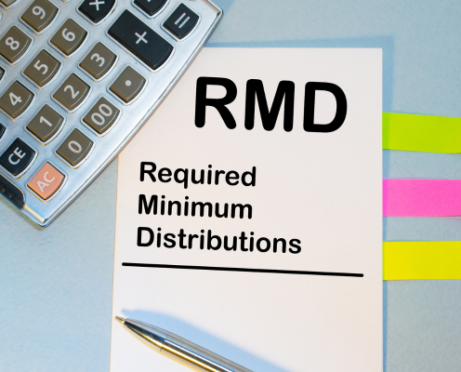
Caring for elderly family members can be both rewarding and challenging even if you are affluent or have enough affordability to speak of. While ensuring quality personal care is key, the financial implications are definitely worth noting.
implications are definitely worth noting.
With healthcare costs on the rise, managing them ahead of time is crucial. This way, you'll have peace of mind knowing your finances are secure while you provide top-notch care for your loved one.
As individuals who value quality in every aspect of life, understanding the financial implications and options available for hospice care is essential. So, let's demystify this subject.
Firstly, let's take a glance at Medicare. It generously covers approximately 85% of hospice care costs, including all medically indispensable services such as nursing care, counseling, medications, and even medical equipment.
As per the latest data, Medicare covers about $150 daily for home care and around $500 for inpatient care. A comprehensive understanding of these figures can help when discussing coverage with your wealth manager or financial advisor.
Medicare for Your Elderly Family Members
To kick off, let's go over the various segments of Medicare and their corresponding coverage details.
Part A's got your back when it comes to inpatient hospital stays, skilled nursing facility care, and more. Here's the kicker: no out-of-pocket annual premiums! However, you'll have some annual deductibles and copays.
Part B medical coverage covers all sorts of essentials — from check-ups and lab tests to X-rays and preventive screenings! While it does carry both annual deductibles and co-pays, monthly premium payments keep things moving smoothly.
If you're looking for a more affordable alternative to Medicare, Part C (Medicare Advantage) might be right up your alley! Bundled plans often provide more comprehensive coverage, including things like vision, hearing, and dental. Just remember, while you'll have access to plenty of Medicare-approved doctors, providers, and medical care, these plans usually come with more restrictions. Most operate as HMOs, requiring you to stick to their network of healthcare providers. Choose wisely!
Part D If you want prescription drug coverage, you can opt for this add-on that requires monthly premiums, annual deductibles, and copays. Rest assured, we'll make sure you're covered by an approved plan and under both Medicare A and B (or C).
Don't let healthcare expenses bankrupt you!
If you're a Medicare beneficiary, consider Medigap from private insurers – it fills in any coverage gaps in Part A and B, including copayments, coinsurance, deductibles, and foreign travel health emergencies. And with 10 different plan options available, you can choose the coverage that best fits your needs!
 When weighing your Medicare options, think ahead to your future healthcare needs. Is there a history of chronic disease or any pre-existing conditions? If yes, it's worth exploring more comprehensive coverage such as a Medigap policy.
When weighing your Medicare options, think ahead to your future healthcare needs. Is there a history of chronic disease or any pre-existing conditions? If yes, it's worth exploring more comprehensive coverage such as a Medigap policy.
Always remember, planning ahead not only gives you peace of mind but also helps you save a pile of bills down the road! You or your family will be grateful for your proactive approach.
Medicare is generally available to anyone age 65 or older (as well as to younger people with qualifying disabilities). Part A is available premium-free if you paid Medicare taxes for at least 10 years (40 quarters) of your working life. If you or your family member have fewer work credits than that, however, you’ll be required to pay a monthly premium. For 2023, the premium would be:
- $278/month if you had 30–39 quarterly credits
- $506/month if you have fewer than 30 quarterly credits
It is important to note that these are just estimates and the actual cost of Part A premiums may vary depending on a number of factors, such as your income and your marital status. You can find more information about Part A premiums on the Medicare website.
High-income earners shouldn’t forget about income-related monthly adjustment amount (IRMAA) surcharges! Based on your modified AGI from 2 years prior and tax filing status, you could face one of five income brackets with incrementally higher surcharges. Keep your costs in check by factoring this into your calculations.
Medicaid and Private Insurance Plans
Like Medicare, Medicaid extends its coverage to hospice care, but the degree of coverage varies from state to state. Some states' Medicaid plans cover the full cost of hospice care, while others might include copays or deductibles. As high-net-worth individuals, it's vital to be aware of these variances, especially if you have homes in multiple states.
Private insurance often plays a substantial role in a high-net-worth individual's healthcare strategy. Depending on your policy, private insurance might also provide coverage for hospice care. However, it's essential to note that the coverage might not be as broad-ranging as Medicare or Medicaid. Therefore, it's wise to verify the extent of hospice care coverage with your insurance provider.
If you're one of the few who opt to shoulder the cost of hospice care out of pocket, be aware that costs can fluctuate based on the type of care needed and the location of your hospice provider.
To make your hospice care journey more manageable, we've got some savvy tips:
- In-Network Hospice Provider: If you're utilizing Medicare or Medicaid, it's wise to choose a hospice provider that falls within your network. It ensures seamless coverage by your insurance.
- Home Care Consideration: It's worth considering home care as an option. Not only does it offer the comfort of familiar surroundings, but it also often comes with a smaller price tag than inpatient care.
- Expert Consultation: Engage with your wealth manager or financial advisor while considering hospice care options. Their advice can be invaluable in navigating costs, insurance coverage, and finding a hospice provider that aligns with your expectations and budget.
Hospice care, when planned correctly, needn't be a financial burden. By discussing this topic with your doctor and financial advisors, you can ensure that the best possible care is received without compromising your financial plans.
 Meanwhile, here are some cost items to consider when caring for someone at home:
Meanwhile, here are some cost items to consider when caring for someone at home:
Home Care Services
In-home aides provide specialized services tailored toward individuals who require help with their day-to-day activities. These services could include bathing, dressing, feeding, light housekeeping, medication reminders, and even transportation to doctors’ appointments. On average, most high-net-worth families can expect to pay between $20 and $30 per hour for in-home care services.
Hospice Care
For individuals with a terminal illness such as cancer or Alzheimer’s Disease, hospice care is the best option since it provides comprehensive care that meets both physical and emotional needs. This type of care may involve medical equipment rentals or home nursing visits which are typically covered by Medicare. However, it’s important to be aware that certain optional items like comfort medications or special therapies may not be covered by Medicare and will have to be paid out-of-pocket for by the family.
Medical Supplies
Caring for someone at home may require a variety of medical supplies such as wheelchairs, walkers, transfer chairs, shower benches, and bedside rails. Depending on your insurance coverage, you may be able to get some of these items at reduced rates or even free of charge. Additionally, there are several organizations like the National Family Caregiver Support Program that offer financial assistance for medical supplies on an annual basis. This program is open to all high-net-worth families who meet their eligibility criteria. Some examples of expenses include:
- Wheelchair: A manual wheelchair typically costs $20-$100 per week to rent, while an electric wheelchair costs $50-$250 per week.
- Hospital bed: A hospital bed typically costs $50-$200 per week to rent.
- Oxygen concentrator: An oxygen concentrator typically costs $50-$200 per month to rent.
- Caregiver: The cost of a caregiver varies depending on the services needed and the caregiver's experience. However, you can expect to pay $20-$50 per hour for a caregiver
All the other cost items
Other cost items that you must be prepared for include regular doctor’s visits, medication costs, and any other services needed by the patient. It’s important to consult your insurance provider before making any major decisions in order to ensure that you have adequate coverage in place.
While it’s impossible to completely eliminate the financial burden of caring for an elderly family member or loved one at home, high-net-worth families can take steps to manage their healthcare costs more effectively. These steps could include creating a budget for care expenses, shopping around for discounted medical supplies and services, and taking advantage of government programs like Medicare and Medicaid. By taking proactive measures to understand the potential costs associated with home care, high-net-worth families can better prepare themselves financially while providing quality care to those in need.a case-by-case basis.
Managing Effectively
In order to manage healthcare costs effectively when taking care of someone at home, high-net-worth families should take advantage of available resources such as tax credits and deductions for caregivers or respite care provisions from their long-term disability insurance policies. Additionally, researching online forums and utilizing local support groups can help families navigate through the complex network of healthcare expenses. By doing so, families can ensure that they receive quality care while managing their finances in a sustainable way.
It is important to factor in all of these costs when planning to care for an elderly family member at home. By doing so, you can ensure that you are prepared financially and that you can provide your loved one with the best possible care.
Here are some tips for managing the costs of caring for an elderly family member at home:
- Create a budget: This will help you to track your expenses and make sure that you are not overspending.
- Shop around for discounts: There are many ways to get discounts on medical supplies and services. You can compare prices online, ask your doctor for recommendations, or join a buying club.
- Take advantage of government programs: There are a number of government programs that can help to offset the costs of caring for an elderly family member. These programs include Medicare, Medicaid, and the National Family Caregiver Support Program.
- Use available resources: There are a number of resources available to help families who are caring for an elderly family member at home. These resources can provide information, support, and financial assistance.
By following these tips, you can help to make the financial burden of caring for an elderly family member at home more manageable.










